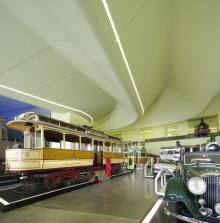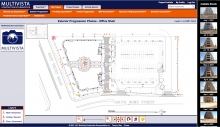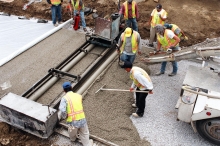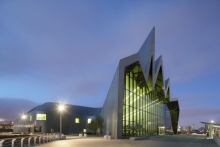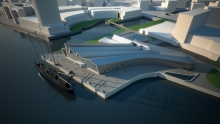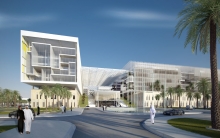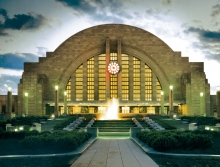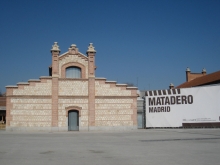- Error
{Re}habitat
Learn how adaptive reuse and upcycling can add hip design to your home, apartment, or yard with the Go Green channel's {Re}habitat series. Follow host Rachael Ranney as she shows you how to repurpose salvaged and found materials, adding fun and function to your space without breaking your budget.

DHA Design illuminates Glasgow’s Riverside Museum of Transport and Travel. This third article in Buildipedia’s five-part series on the Riverside Museum gives an in-depth look at the building’s lighting design.
In 2006, lighting consultancy DHA Design in London was appointed by exhibit firm Event Communications as the lighting designer for the iconic Riverside Museum of Transport in Glasgow, Scotland. For approximately three years, the two firms worked closely to design a lighting plan that would not only embrace architect Zaha Hadid’s overall vision and concept for the museum but also would complement the exhibition layout, which features more than 3,000 objects, films, photographs, and personal testimonials that reveal the vibrant history of the city of Glasgow.
Construction documents technology uses in-progress photos and video footage to offer a significant improvement over the traditional method of producing "as-built" drawings.
Construction documentation technology has multiplied the advantages of the traditional “as-built” process, in which a red pen and the memory of the construction superintendent were the primary tools. Along with (or instead of) a set of marked-up drawings as a final contract deliverable, a more comprehensive construction journal is possible with the new construction documentation technology, which electronically captures the “as-built” process and cross-references electronic drawings to digital photographs.
Pervious Pavement: Pavement That Leaks Like a Sieve, Part 2
Written by Fernando Pages Ruiz Fri Mar 09 2012Contractor to Contractor: In this second of a two-part series, contractor-turned-homebuilder Fernando Pages Ruiz shares his knowledge on how to choose a mix, prep the site, and install porous pavement.
Although a blended, high-course aggregate/low-fines concrete (a concrete blend of Portland cement, 3/8" or pea gravel aggregate, and little to no sand) is a simple concept, the logistics of it are far from simple. For this highly porous concrete to provide a durable surface, conditions have to be almost perfect. The concrete requires an exact proportion of aggregates and water, special chemical admixtures, proper mixing during delivery, and expert placement. I recommend that if you decide to use pervious pavement in one of your projects, don’t do it yourself. Hire the very best paving contractor in your area and work with the largest and most sophisticated ready-mix supplier. Pervious pavement is not so much a concrete product as it is a paving system, including soil, sub-grade, and, of course, the mix.
Second in a five-part series on Glasgow’s Riverside Museum, this article examines the building's structural engineering. International engineering firm Buro Happold provided structural engineering services. Follow Buildipedia throughout the month of March to read in-depth coverage of the Riverside Museum's various design and engineering systems.
Zaha Hadid is known for designing buildings with far-out forms. The recently completed Riverside Museum in Glasgow, Scotland, lives up to this reputation, featuring a zig-zagging profile in plan and section. Although seeming to defy gravity with its column-free spans, the building conceals some savvy structural maneuvers beneath its sleek skin of zinc. Engineering giant Buro Happold was the wizard behind the curtain.
This first in a five-part series on Glasgow’s Riverside Museum offers an overview of Zaha Hadid Architects' first major public commission in the United Kingdom. Follow Buildipedia throughout the month of March to read in-depth coverage of the building's various design and engineering systems.
Glasgow, Scotland, was built on the River Clyde. Having access to the Atlantic Ocean facilitated Glasgow’s ability to trade and, eventually, fostered the growth of a shipbuilding industry. This aspect of the area’s history is commemorated in a Transport and Technology Collection that is now housed in the Riverside Museum of Transport and Travel designed by Zaha Hadid Architects. The £74 million ($120 million) museum opened in June of 2011 and is Hadid’s first major public commission to open in the United Kingdom.
With sensitivity to Abu Dhabi’s local culture, climate, and architectural heritage, SOM designed a medical campus that creates a "city within a city."
Visiting the hospital for any length of time can be a difficult experience for patients and their families, what with adjusting to new surroundings, being separated from loved ones, or just missing the familiarities of home. That is why the designers of the Sheikh Khalifa Medical City have put hospitality and psychological well-being at the forefront of their medical campus design.
A tale of two buildings, and an Art Deco heritage that almost didn’t happen in Cincinnati.
If you were to glance at an original 1929 sketch of Cincinnati’s Union Terminal, a masterpiece of Art Deco architecture and one of the last great train stations built in America, you’d be confused. That’s because the building was originally envisioned as neoclassical. “The sketches were almost gothic looking, and the design was thought to be cold,” says Scott Gampfer, director of the library and historic collections at the Cincinnati Museum Center. “The Cincinnati Union Terminal Company and the Cincinnati Public Works Department were not entirely satisfied with the look that was presented. They wanted to project the idea of modernity,” he says.
Madrid’s Matadero, or slaughterhouse, has been renovated to serve as a social and cultural space, but remembrances of its macabre past remain.
One part of a renovation project has nothing to do with heavy machinery, building materials, or even endless CAD documents. It’s that challenging moment that occurs with every repurposing plan, when planners must decide exactly what percentage of the original building will stay and what should be discarded. How much of the building’s original essence is relevant within the new design?
